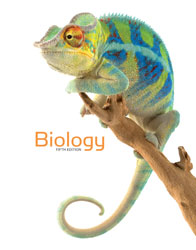


Science
RATIONALE
The teaching of science involves both a historical and empirical approach. Students are introduced to major scientific discoveries associated with the subdomain being taught. Along with the historical, students are encouraged to participate in hands-on labs and practices designed to encourage critical thinking associated with experimental design, data collection, data analysis, and argumentation.

COURSES
Anatomy & Physiology
Biology
Chemistry
Physics
Physics One (Kinematics)
Physics Two (Electromagnetism, Light)
The study of life incorporates a seemingly limitless subject. All of life has unique characteristics that represent a unique cause. This course begins with the basic unit of living organisms, the cell. It then expands to include multi-cellular organisms, organ systems, and higher ordered life forms. Students will look at traditional classification systems, studying each kingdom in order to survey the sum of life in all creation. Along with the study of the taxonomic classifications, students will learn more about Genetics, including moral and ethical questions related to ideas of design, speciation, and theories of origins.
Chemistry is designed to investigate the composition, structure, and properties of substances, how and why substances react with other substances, and why a reaction absorbs or releases energy. Explanations at the quantum level will be connected to chemical observations made at the macroscopic level. Students will work on key topics, developing understanding of the quantum mechanical model of atoms and its applications, bonding, chemical equilibrium, and stoichiometry. They will develop analysis skills as needed to answer practical questions.
Physics is investigation of the fundamental question of how the world around us is moving and why. It deals with the classical physics of bodies and forces, including Newton's laws of motion, the principles of mechanics, work and energy, conservation of energy, momentum and conservation of momentum, circular motion [e.g. Kepler’s laws, periodic motion, etc.]. Students will deepen their understanding of various physical phenomenon and develop analysis skills to answer practical questions. Students with strong math backgrounds have been encouraged to take the AP Physics exam.
Physics 2 is an algebra-based course designed to investigate the following: i) electrical and magnetic phenomena and ii) the sight and behavior of light. Topics associated with electricity and magnetism include the concepts of electrical charges, electric and magnetic fields, electric potential, conductors and insulators, currents, basic circuits, and induction. The topics of the sight and light include reflection, refraction, and some wave optics. Students will deepen their understanding of each physical phenomenon and develop analysis skills to answer practical questions.
ANATOMY AND PHYSIOLOGY (Offered every other year)
Anatomy and Physiology introduces students to the structure and function of God’s fearfully and wonderfully created human body, and its mechanisms for maintaining homeostasis. The course includes the study of cells, tissues, and selected major systems of the human body at both the microscopic and gross structural levels. Laboratory experiences include dissecting model organs and conducting physiology experiments, with students often serving as the “test subject” where appropriate. Emphasis will be placed on the health of a system and application of that information to personal health, although selected pathologies will be discussed for each system studied.
